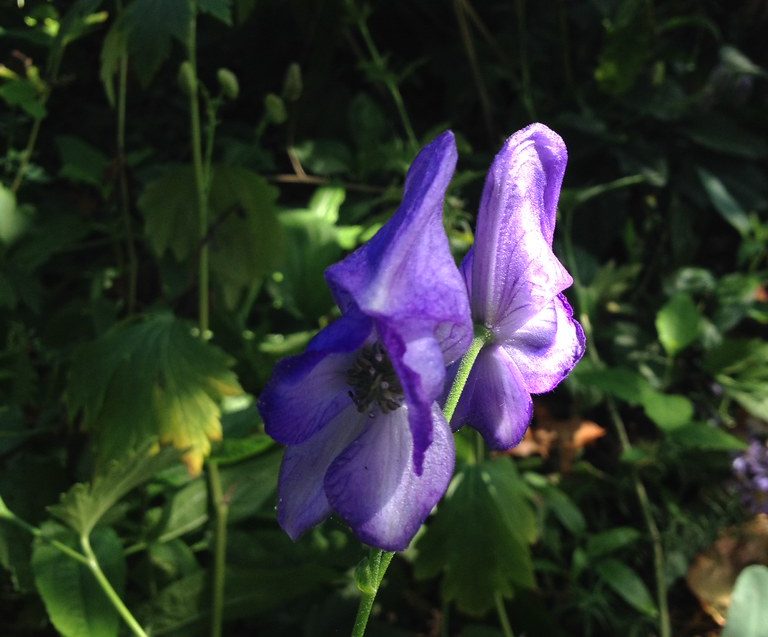As Halloween nears, many of you may begin to have the same worries. How do we protect ourselves from ghouls, goblins and the like that come out every Hallows’ Eve? When werewolves and vampires fill the streets, what is the average human to do?! These creatures can blend right into your neighborhood, how would you even know? Well, dear reader, look no further as protection from the monster madness can likely be found in a forest near you.
We all know werewolves only present themselves during a full moon, so you would think identifying them in your neighborhood would be difficult, right? Wrong. Thick matts of fur and an abundance of fleas cover the nearby woodlands when these manlike-mutts are around. If you think you may know someone who is a werewolf, see if they can recognize themselves while staring in a mirror. If not, you’ve got yourself a bonafide moon-howler. After all, they are werewolves, not self-aware wolves.
Planting a healthy amount of wolfsbane, also known as monkshood (Aconitum uncinatum) around your house will stop the fury intruders quicker than a silver bullet. Plus, monkshood beckons native bumblebees with nectar and vibrant blue flowers. If you’ve got moist shady areas in your yard, plant these native plants, they may just save your life.
Vampires are much harder to spot than their canine counterparts. However, there are a few identifiers to look out for: a repulsion to garlic bread, leaving the house only at night, and laughing maniacally when invited to donate blood. That’s a vampire!
Fear not though, because the vampire’s natural enemy grows in our native woodlands. Blue vervain (Verbena hastata) grows in sunny, moist open spaces reaching 5 feet tall. While its beautiful tall blue flower spikes host pollinators like the common buckeye butterfly, vampires are burned by their very touch. Planting these in your garden is a great way to repel vamps and attract native insects.
Many of you may wonder, what about all the other spooky intruders? Thankfully, most other paranormal visitors have the common decency to knock on your door and let you know their intentions with a simple ultimatum: “Trick or treat!” Through years of research, I can confidently tell you the easiest way to rid yourself of these polite paranormal encounters is to provide them with a treat.
Wild ginger (Asarum canadense) grows abundantly in most any Indiana woodland. The large, low growing, heart shaped leaves persist throughout fall, making them easy to spot on a hike. The root of this plant can be gathered and candied for a snack that can soothe even the most substantial spectral sweet tooth. Heck, wild ginger does so well, planting them in a shady spot in your yard would be perfect ground cover.
This time of year can be scary. But having an understanding of the nature around you can save your life from Halloween terrors. So I say this, reader, go out, take a hike, and learn about the native plants and animals. You never know, one day you may find yourself between a ghoul and a goblin and think to yourself, “I should have planted more native plants!”
Jake Gamble is the Stewardship Coordinator for Red-tail Land Conservancy. Impassioned by land conservation, he strives to protect and preserve the natural quality of Indiana while inspiring others to do the same.
Pictured above: Monkshood / Wolfsbane credit AsiVivo




